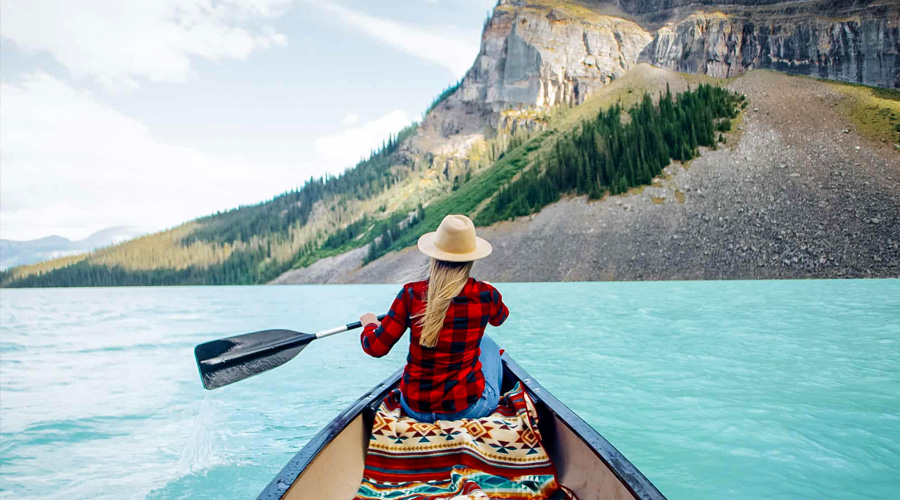Canada is celebrated for its breathtaking natural beauty, with vast forests, serene lakes, and winding rivers. Among the many ways to explore this diverse landscape, canoeing stands out as a quintessential Canadian experience. More than a recreational activity, the canoe embodies a rich history of connection to nature, cultural exchange, and survival. Whether you’re gliding across a tranquil lake at sunrise or navigating the thrilling rapids of a wild river, canoeing offers a unique opportunity to immerse yourself in Canada’s heritage and wilderness.
Indigenous Ingenuity and the Canoe’s Role in Traditional Life
The canoe is a testament to the ingenuity of Canada’s Indigenous peoples, who designed and crafted these vessels to navigate the country’s vast waterways. For thousands of years, canoes were essential for transportation, trade, and survival. Traditional canoes were made with natural materials like birch bark, cedar wood, and spruce roots, reflecting the environment and resources of specific regions.
Beyond their practicality, canoes held cultural and spiritual significance, serving as tools for hunting, migration, and community bonding. In forested areas, lightweight birchbark canoes were ideal for portaging, while along the rugged west coast, larger dugout canoes carved from cedar trees were better suited for open waters.
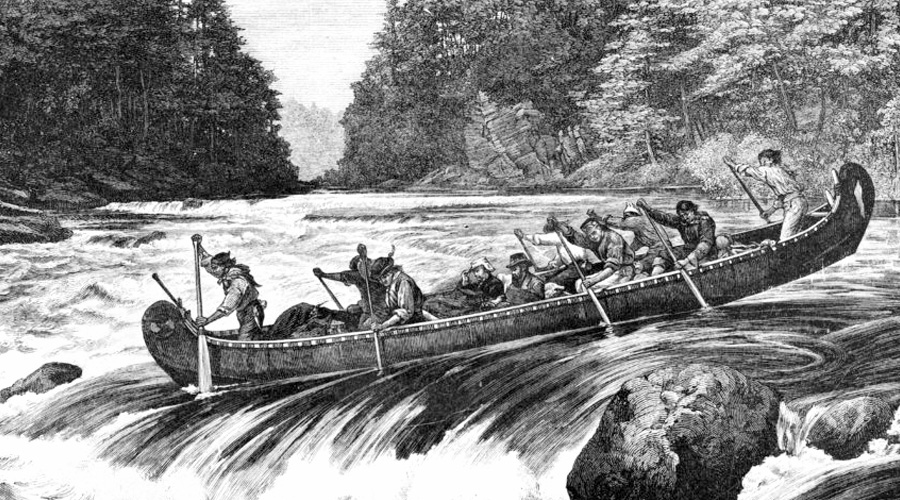
Canoes in the Fur Trade Era and Early Exploration
European settlers quickly recognized the value of Indigenous canoes, adapting their designs to suit the demands of the fur trade. During the 17th and 18th centuries, large birchbark canoes like the Montreal and North canoes were vital for transporting goods and furs across Canada’s vast and challenging terrain.
These sturdy, lightweight vessels enabled voyagers to traverse remote waterways, connecting Indigenous communities, European traders, and settlers. The fur trade, a cornerstone of Canada’s early economy, relied heavily on canoes, cementing their role as symbols of resilience and exploration in the nation’s history.
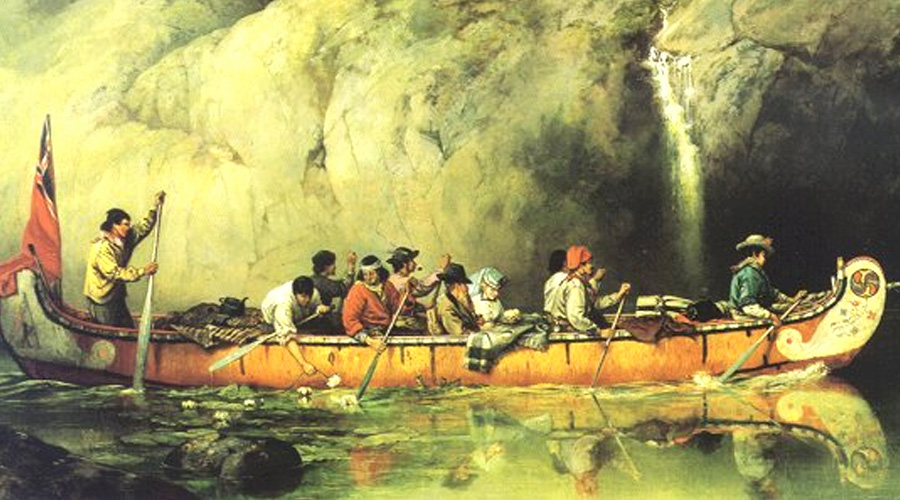
Adaptation and Evolution of Canoe Design
As Canada’s geography demanded versatility, canoe designs evolved over time. In the Arctic, Inuit communities developed umiaks and kayaks for icy waters, while in the industrial era, materials like canvas and aluminum replaced traditional birchbark, increasing durability and accessibility. Today, the modern canoe is a blend of Indigenous innovation and contemporary engineering, reflecting the diverse history and landscapes of Canada.
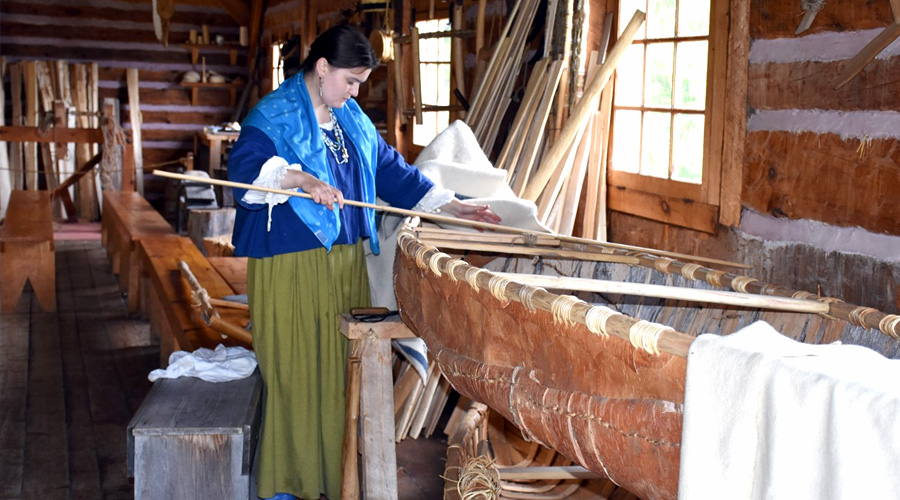
Why Canoeing is a Must-Do Experience in Canada
Canada is home to world-class canoeing destinations that showcase its stunning natural beauty:
- Algonquin Provincial Park (Ontario): Renowned for its serene lakes, lush forests, and extensive canoe routes, Algonquin offers a paddling paradise for all skill levels. Picture yourself gliding across its calm waters at sunrise, surrounded by the call of loons.
- Bowron Lakes Circuit (British Columbia): This 116-kilometer chain of lakes provides an adventurous journey through rugged wilderness, framed by towering mountains. It’s a bucket-list destination for seasoned paddlers.
- Mackenzie River (Northwest Territories): As Canada’s longest river, the Mackenzie offers a once-in-a-lifetime paddling experience through remote northern landscapes rich in history and wildlife.
Unique Perspectives on Canada’s Wilderness
Canoeing allows you to experience Canada’s wilderness in a way few other activities can. From the quiet glide across a glassy lake to the thrill of navigating a winding river, the perspective from a canoe brings you closer to nature. Imagine paddling alongside a moose drinking from the water’s edge or floating under a canopy of stars in complete solitude. These intimate moments reveal the raw beauty of Canada’s untouched landscapes.
Cultural and Emotional Connection to the Land
Paddling a canoe connects you to Canada’s rich history and Indigenous roots. As you follow ancient waterways once traveled by explorers and fur traders, you feel a sense of continuity and respect for the land. The rhythmic motion of paddling fosters mindfulness, allowing you to unplug and fully immerse yourself in the tranquility of the wilderness. Canoeing isn’t just a physical journey—it’s an emotional and spiritual one.
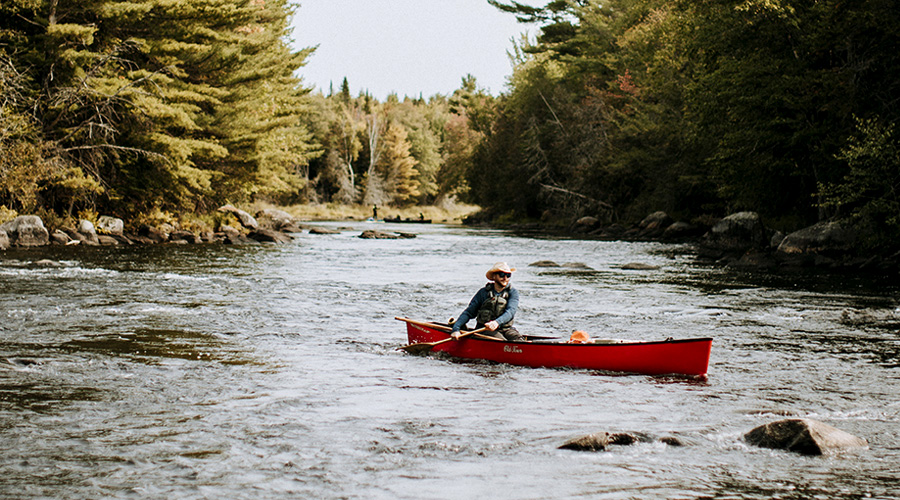
Best Seasons for Canoeing in Canada
The best time for canoeing depends on the region and the type of adventure you’re seeking. Here’s a guide to help you plan:
Spring (May to June):
As the ice melts and rivers swell with fresh snowmelt, spring offers vibrant landscapes and faster river flows. This is a great time to explore places like the Yukon, but be prepared for cooler temperatures and higher water levels.
Summer (July to August):
Summer is the peak season for canoeing, with warm weather, long daylight hours, and calm waters. Iconic destinations like Algonquin Park and Bowron Lakes are at their best, offering ideal conditions for multi-day trips. However, popular spots can be busy, so consider exploring lesser-known routes for a more tranquil experience.
Fall (September to October):
Fall brings cooler air and stunning autumn foliage, creating a magical setting for canoeing. Destinations like Killarney Provincial Park (Ontario) or La Mauricie National Park (Quebec) offer breathtaking views of vibrant red, orange, and yellow leaves reflected on calm waters. The thinner crowds and crisp weather make this an unforgettable season for paddling.
Winter (November to April):
While canoeing is rare during winter due to frozen waterways, milder coastal regions like British Columbia may still offer opportunities for short paddles. Otherwise, this is the time to explore other outdoor activities, such as snowshoeing or winter camping.

Canoeing: Canada’s Must-Do Experience
Canoeing in Canada is more than an adventure—it’s a journey into the heart of the country’s history, culture, and natural beauty. Whether you’re exploring iconic destinations like Algonquin Park, immersing yourself in the wilderness, or forging a deep connection to the land, canoeing offers experiences that are both timeless and transformative. For anyone seeking to truly understand and appreciate the Authentic Canada, stepping into a canoe is an absolute must. And if you’re fascinated by how Canadians live in harmony with their surroundings, don’t miss this look at the aesthetic and practical allure of Canadian houses.

